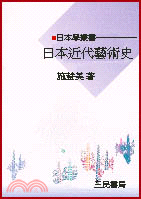相關商品
商品簡介
作者簡介
目次
商品簡介
《普通語言學基礎》主要是為英語專業本科高年級“普通語言學導論”課程編寫的。為了更適合該課程教學中的特點和學生的實際水平,《普通語言學基礎》要點突出,文字簡潔,在內容、篇幅、舉例等方面都具有鮮明的特點。《普通語言學基礎》為本科生普通語言學課程提供了新的可選擇的教材,同時由于其較強的可讀性,也完全可以作為一本普通語言學的普及讀物,為那些喜歡語言學知識或初學語言學的一般讀者使用。
作者簡介
馬壯寰,北京第二外國語學院英語學院教授,碩士生導師,英語學術帶頭人,長期擔任普通語言學等課程的教學工作,并從事或涉獵普通語言學、語言符號學、應用語言學及英語演講等研究。曾于《當代語言學》等學術刊物發表過若干學術論文,著有《索緒爾語言理論要點評析》、《語言研究論稿》、《演講英語》、《功能英語》等。多次獲得學院科研一等獎,并榮獲北京第二外國語學院優秀導師、教學名師等稱號。2004年被評為北京市優秀教師。現擔任“普通語言學導論”北京市級精品課程建設項目。
目次
Chapter 1 An Overview of Language and Linguistics
1.1 What Is General Linguistics?
1.1.1 Defining Linguistics
1.1.2 Principles of Linguistic Science
1.1.3 A Natural Science or a Social Science?
1.1.4 What Is Meant by General?
1.1.5 Some Basic Distinctions in Linguistics
1.1.6 What Is the Use of Linguistics?
1.2 What Is Language?
1.2.1 Defining Language
1.2.2 Design Features of Language
1.2.3 Functions of Language
Chapter 2 Phonetics
2.1 Aim of Phonetics
2.2 Different Types of Phonetics
2.3 Vocal Organs
2.4 Two Major Types of Speech Sounds
2.4.1 Consonants
2.4.2 Vowels
2.4.3 Cardinal Vowel System
Chapter 3 Phonology
3.1 Aim of Phonology
3.2 Phonemes and Allophones
3.3 Minimal Pair
3.4 Three Criteria for Grouping Phones into Phonemes
3.4.1 Free Variation
3.4.2 Complementary Distribution
3.4.3 Phonetic Similarity
3.5 Distinctive Features and Natural Classes
3.6 Phonological Processes
3.6.1 Co-articulation Effects
3.6.2 Elision
3.6.3 Assimilation
3.7 Phonological Rules of English
3.7.1 Nasalization
3.7.2 Nasal Assimilation
3.7.3 Aspiration Rule
3.7.4 Rule Ordering
3.8 Syllable and Stress
Chapter 4 Morphology
4. 1 Aim of Morphology
4.2 Word and Morpheme
4.2.1 What Is a Word?
4.2.2 Classifications of Words
4.2.3 What Is a Morpheme?
4.3 Morpheme and Allomorph
4.3.1 Phonetically Conditioned Allomorphs
4.3.2 Lexically or Grammatically Conditioned Allomorphs
4.4 Relation between Morpheme and Phoneme
4.5 Word Formation
4.5.1 Compound
4.5.2 Derivation
Chapter 5 Syntax
5.1 What Is Syntax?
5.2 The Traditional Grammar
5.2.1 The History of the Traditional Grammar
5.2.2 Syntactic Elements and Their Defining Properties
5.2.3 Syntactic Relations Between Words
5.2.4 The Ways Words are Organized Into Sentences
5.3 The Structural Grammar
5.3.1 Saussure and His Linguistic Theory
5.3; 2 American Structuralist Linguistics
5.4 The Generative Linguistics
5.4.1 Chomsky and Generative Linguistics:What Generative Means
5.4.2 Five Stages of Generative Linguistics
5.4.3 The Classical Theory (1957——1965)
5.4.4 The Standard Theory (1965——1972)
5.4.5 The Extended Standard Theory Model(1972——1981)
5.4. 6 The Government and Binding Theory Model(i981——1993)
5.4.7 The Minimalist Program Model(1993——)
Chapter 6 Semantics
6.1 An Overview of Semantics
6.1.1 Aim of Semantics
6.1.2 Semantics at Different Levels
6.1.3 Difficulty of Semantics
6.2 Some Semantic Theories
6.2.1 Referential Theory
6.2.2 Mentalist Theory
6.2.3 Use Theory
6.3 Classification of Meaning
6.3.1 Seven Types of Meaning Proposed by Leech
6.3.2 Sense, Reference, and Denotation
6.4 Sense Relations
6.4.1 Synonymy
6.4.2 Antonymy
6.4.3 Hyponymy
6.5 Simple Logic and Semantics
6.5.1 Simplified Form of Predicate Calculi
6.5.2 Simple Propositional Logic
6.6 Ambiguity
Chapter 7 Pragmaties
7.1 Defining Pragmatics
7.2 Pragmatics. Past and Present
7.2.1 Focus on Change: Three Stages of Development
7.2.2 Tasks in Hand: Two Components of Pragmatics
7.3 Critical Concepts and Theories in Pragmatics
7.3.1 Between Semantics and Pragmatics
7.3.2 Beyond Semantics
7.4 Pragmatics in Development
7.4.1 Relevance Theory
7.4.2 Horns Bipartite System and Levinsons Tripartite System
Chapter 8 Language and Society
8. 1 The Relatedness between Language and Society
8.1.1 Possible Relations between Language and Society
8.1.2 Socioliuguistics
8.2 Variable, Variant and Variation
8.3 Regional Dialect and Its Semantic Extension
8.4 Language Use and Social Factors
8.4.1 Sociolect
8.4.2 Genderleet
8.4.3 Agelect
8.4.4 Ethnic Dialect
8.5 Language Change
8.5.1 Language Change in Progress
8.5.2 Forms of Language Change
Chapter 9 Language, Culture and Thought
9.1 The Relations between Language, Culture and Thought ~
9.1.1 Language and Culture
9.1.2 Language and Thought
9.1.3 Sapir-Whorf Hypothesis
9.2 Some Cultural Items
9.2.1 Politeness and Cross-cultural Communication
9.2.2 Greetings
9.2.3 Taboo and Euphemism
9.2.4 Address Terms
Chapter 10 Language Acquisition
10. 1 First Language Acquisition
10. 1.1 Three Views on First Language Acquisition
10.1.2 Characteristics of First Language Acquisition
10.1.3 Stages of First Language Acquisition
10.2 Second Language Learning
10.2.1 First Language Acquisition versus Second Language Learning
10.2.2 Contrasts between First Language Acquisition and Second Language Learning
10.2.3 Stages of Second Language Learning
Appendix
Index
1.1 What Is General Linguistics?
1.1.1 Defining Linguistics
1.1.2 Principles of Linguistic Science
1.1.3 A Natural Science or a Social Science?
1.1.4 What Is Meant by General?
1.1.5 Some Basic Distinctions in Linguistics
1.1.6 What Is the Use of Linguistics?
1.2 What Is Language?
1.2.1 Defining Language
1.2.2 Design Features of Language
1.2.3 Functions of Language
Chapter 2 Phonetics
2.1 Aim of Phonetics
2.2 Different Types of Phonetics
2.3 Vocal Organs
2.4 Two Major Types of Speech Sounds
2.4.1 Consonants
2.4.2 Vowels
2.4.3 Cardinal Vowel System
Chapter 3 Phonology
3.1 Aim of Phonology
3.2 Phonemes and Allophones
3.3 Minimal Pair
3.4 Three Criteria for Grouping Phones into Phonemes
3.4.1 Free Variation
3.4.2 Complementary Distribution
3.4.3 Phonetic Similarity
3.5 Distinctive Features and Natural Classes
3.6 Phonological Processes
3.6.1 Co-articulation Effects
3.6.2 Elision
3.6.3 Assimilation
3.7 Phonological Rules of English
3.7.1 Nasalization
3.7.2 Nasal Assimilation
3.7.3 Aspiration Rule
3.7.4 Rule Ordering
3.8 Syllable and Stress
Chapter 4 Morphology
4. 1 Aim of Morphology
4.2 Word and Morpheme
4.2.1 What Is a Word?
4.2.2 Classifications of Words
4.2.3 What Is a Morpheme?
4.3 Morpheme and Allomorph
4.3.1 Phonetically Conditioned Allomorphs
4.3.2 Lexically or Grammatically Conditioned Allomorphs
4.4 Relation between Morpheme and Phoneme
4.5 Word Formation
4.5.1 Compound
4.5.2 Derivation
Chapter 5 Syntax
5.1 What Is Syntax?
5.2 The Traditional Grammar
5.2.1 The History of the Traditional Grammar
5.2.2 Syntactic Elements and Their Defining Properties
5.2.3 Syntactic Relations Between Words
5.2.4 The Ways Words are Organized Into Sentences
5.3 The Structural Grammar
5.3.1 Saussure and His Linguistic Theory
5.3; 2 American Structuralist Linguistics
5.4 The Generative Linguistics
5.4.1 Chomsky and Generative Linguistics:What Generative Means
5.4.2 Five Stages of Generative Linguistics
5.4.3 The Classical Theory (1957——1965)
5.4.4 The Standard Theory (1965——1972)
5.4.5 The Extended Standard Theory Model(1972——1981)
5.4. 6 The Government and Binding Theory Model(i981——1993)
5.4.7 The Minimalist Program Model(1993——)
Chapter 6 Semantics
6.1 An Overview of Semantics
6.1.1 Aim of Semantics
6.1.2 Semantics at Different Levels
6.1.3 Difficulty of Semantics
6.2 Some Semantic Theories
6.2.1 Referential Theory
6.2.2 Mentalist Theory
6.2.3 Use Theory
6.3 Classification of Meaning
6.3.1 Seven Types of Meaning Proposed by Leech
6.3.2 Sense, Reference, and Denotation
6.4 Sense Relations
6.4.1 Synonymy
6.4.2 Antonymy
6.4.3 Hyponymy
6.5 Simple Logic and Semantics
6.5.1 Simplified Form of Predicate Calculi
6.5.2 Simple Propositional Logic
6.6 Ambiguity
Chapter 7 Pragmaties
7.1 Defining Pragmatics
7.2 Pragmatics. Past and Present
7.2.1 Focus on Change: Three Stages of Development
7.2.2 Tasks in Hand: Two Components of Pragmatics
7.3 Critical Concepts and Theories in Pragmatics
7.3.1 Between Semantics and Pragmatics
7.3.2 Beyond Semantics
7.4 Pragmatics in Development
7.4.1 Relevance Theory
7.4.2 Horns Bipartite System and Levinsons Tripartite System
Chapter 8 Language and Society
8. 1 The Relatedness between Language and Society
8.1.1 Possible Relations between Language and Society
8.1.2 Socioliuguistics
8.2 Variable, Variant and Variation
8.3 Regional Dialect and Its Semantic Extension
8.4 Language Use and Social Factors
8.4.1 Sociolect
8.4.2 Genderleet
8.4.3 Agelect
8.4.4 Ethnic Dialect
8.5 Language Change
8.5.1 Language Change in Progress
8.5.2 Forms of Language Change
Chapter 9 Language, Culture and Thought
9.1 The Relations between Language, Culture and Thought ~
9.1.1 Language and Culture
9.1.2 Language and Thought
9.1.3 Sapir-Whorf Hypothesis
9.2 Some Cultural Items
9.2.1 Politeness and Cross-cultural Communication
9.2.2 Greetings
9.2.3 Taboo and Euphemism
9.2.4 Address Terms
Chapter 10 Language Acquisition
10. 1 First Language Acquisition
10. 1.1 Three Views on First Language Acquisition
10.1.2 Characteristics of First Language Acquisition
10.1.3 Stages of First Language Acquisition
10.2 Second Language Learning
10.2.1 First Language Acquisition versus Second Language Learning
10.2.2 Contrasts between First Language Acquisition and Second Language Learning
10.2.3 Stages of Second Language Learning
Appendix
Index
主題書展
更多
主題書展
更多書展本週66折
您曾經瀏覽過的商品
購物須知
大陸出版品因裝訂品質及貨運條件與台灣出版品落差甚大,除封面破損、內頁脫落等較嚴重的狀態,其餘商品將正常出貨。
特別提醒:部分書籍附贈之內容(如音頻mp3或影片dvd等)已無實體光碟提供,需以QR CODE 連結至當地網站註冊“並通過驗證程序”,方可下載使用。
無現貨庫存之簡體書,將向海外調貨:
海外有庫存之書籍,等候約45個工作天;
海外無庫存之書籍,平均作業時間約60個工作天,然不保證確定可調到貨,尚請見諒。
為了保護您的權益,「三民網路書店」提供會員七日商品鑑賞期(收到商品為起始日)。
若要辦理退貨,請在商品鑑賞期內寄回,且商品必須是全新狀態與完整包裝(商品、附件、發票、隨貨贈品等)否則恕不接受退貨。

























